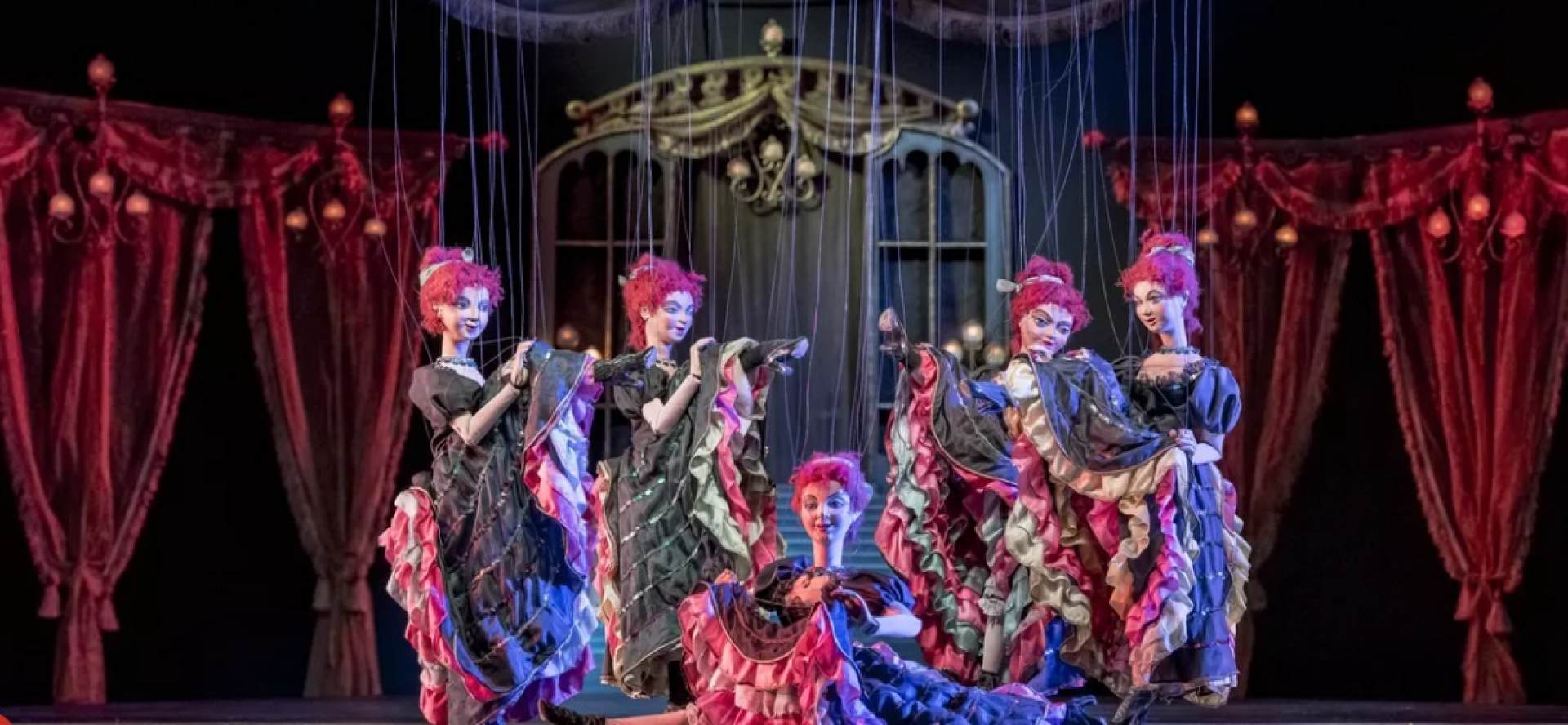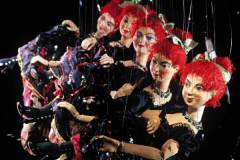The Bat
Mo | Tu | We | Th | Fr | Sa | Su |
Duration: 2 hours (with intermission after the second act)
Operetta in three acts
Libretto: Karl Haffner and Richard Genée
First performance: Vienna, April 5, 1874
German with explanations in English, French, Spanish
Abstract
Gabriel von Eisenstein has to report to prison to start a week's sentence for insulting a police officer. His friend Dr. Falke persuades him to spend his last night of freedom at a ball given by Prince Orlofsky. In reality, however, Dr. Falke is planning revenge for a prank Eisenstein had played on him, and initiates Eisentstein's wife Rosalinde and her maid Adele into the plot.
Program and cast
Production: Adi Fischer
Choreography: Sylvia Wenschau
Set design: Günther Schneider-Siemssen
Costumes: Friedl Aicher
Sculptor: Josef Magnus
Light: Philippe Brunner / Alexander Proschek
Sound: Alexander Proschek
Puppeteers: Philippe Brunner, Anne-Lise Droin, Pierre Droin, Vladimir Fediakov, Edouard Funck, Heide Hölzl, Max Kiener, Marion Mayer, Emanuel Paulus, Eva Wiener, Ursula Winzer
Singers: Hanns Bergen, Anton Dermota, Hilde Güden, August Jaresch, Wilma Lipp, Julius Patzak, Alfred Poell, Kurt Preger, Sieglinde Wagner
Speakers: Otto David, Adi Fischer, Hannes Franken, Christl Haumer, Lola Kneidinger, Hans Schellbach, Anneliese Stöckl, Jutta Tenor
Additional information
Wiener Staatsopernchor
Wiener Philharmoniker
Conductor: Clemens Krauss
Recording: Decca 1955
Premiere: 1954
The puppets and the equipment were made in the workshops of the Salzburg Marionette Theatre.
Salzburg Marionette Theatre
In 1893, the old-established Kaltenhausen brewery built "a restaurant and function-rooms" in the Schwarzstrasse, between the Lasser Villa (now the Mozarteum) and the theatre. The architect was Carl Demel, the master builder Valentin Ceconi. In 1897 these function-rooms were converted to the Mirabell Hotel. After World War II the Mirabell Casino was the principal tenant until 1968. Conversion work began in 1970, in order to give the Marionette Theatre a new playhouse. The former dining-room of the Mirabell Hotel was converted into an auditorium with a stage, and its rich decoration of stucco and frescoes is still impressive. There was similar stucco-work, though not quite so opulent, in the foyer, but unfortunately in the course of the 1970/71 conversion it was covered by a plasterboard ceiling. The stucco ceiling underneath was forgotten, to be rediscovered in 2000 when repairs were being carried out. In 2003 the foyer was restored to its original condition.

 EN
EN DE
DE IT
IT FR
FR ES
ES RU
RU JP
JP RO
RO
 Seating plan
Seating plan 

